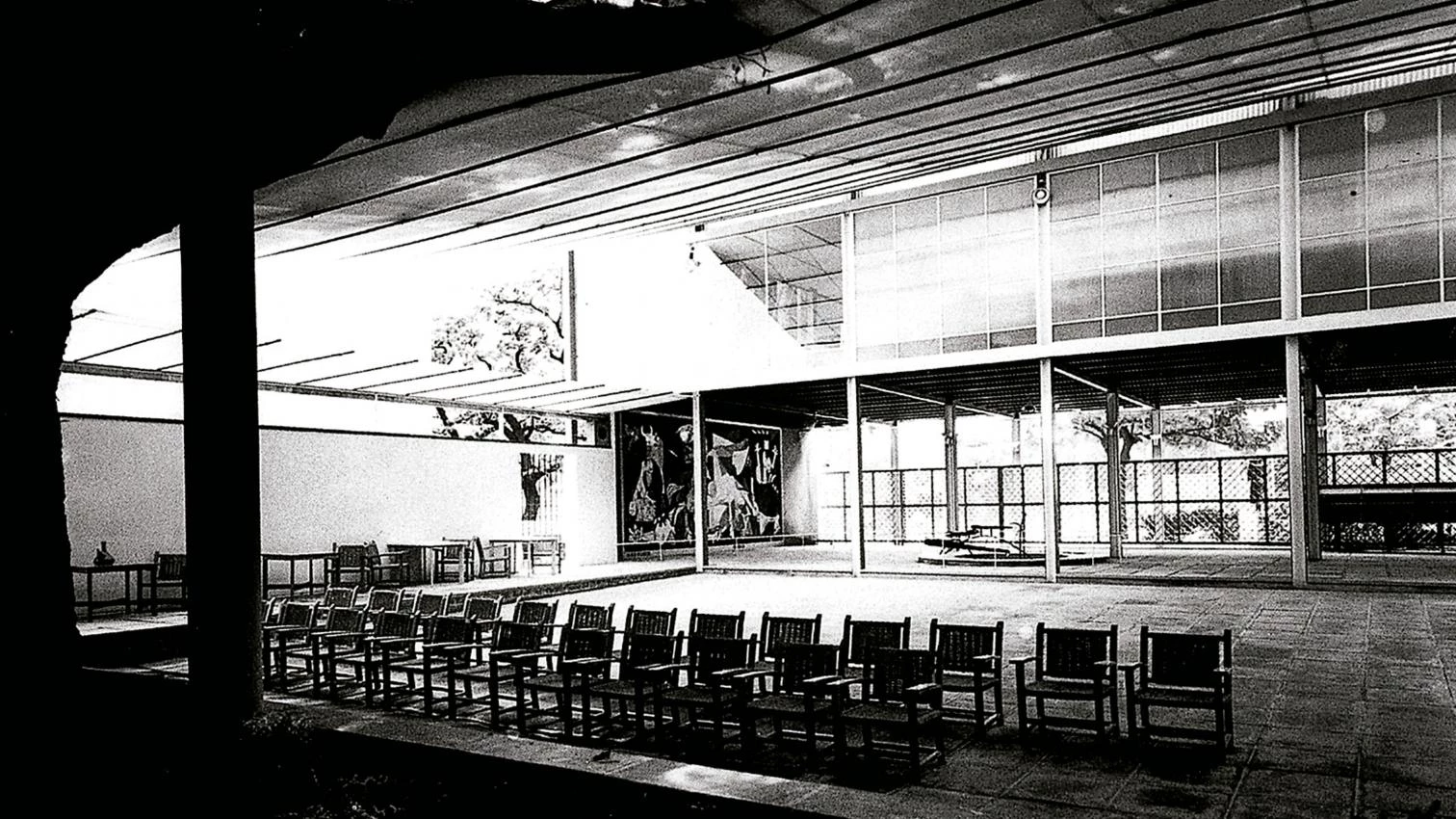
Spain entered modernity with two pavilions. In Barcelona, Mies van der Rohe built the German Pavilion at the 1929 Expo, a modern manifesto strayed among beauxartian constructions; in Paris, Josep Lluís Sert designed the Spanish one at the International Exposition of 1937, a cry for help from a country torn by the war denounced in Picasso’s Guernica – a work commissioned for the pavilion, and exhibited within its Corbusian white walls. Two years later, both Mies and Sert would be living in the USA, fleeing from the turmoil of a continent where totalitarian rule was on the rise: in April 1939, Franco proclaimed the end of the Spanish Civil War, remaining in power until his death in 1975; in September 1939, Hitler invaded Poland, starting World War II – six years of unprecedented devastation that would deeply hurt the European heartland. When Europe was rebuilt with a modern language after 1945, many of its masters were abroad: Mies was working and teaching at Chica-go’s IIT; Sert at different American cities, until he settled in Cambridge, replacing in 1953 Walter Gropius –another European exile – as dean of Harvard’s GSD. By then, the Cold War had made Franco a valuable anticommunist ally of the western powers, and the isolation that followed the end of WWII had turned into reluctant acceptance, opening up a regime that after 1959 adopted a growth oriented, liberal economy. In the 60s, Sert was working in Spain as Mies was building in his native Germany, and the wounds of conflict had begun to heal... [+]





